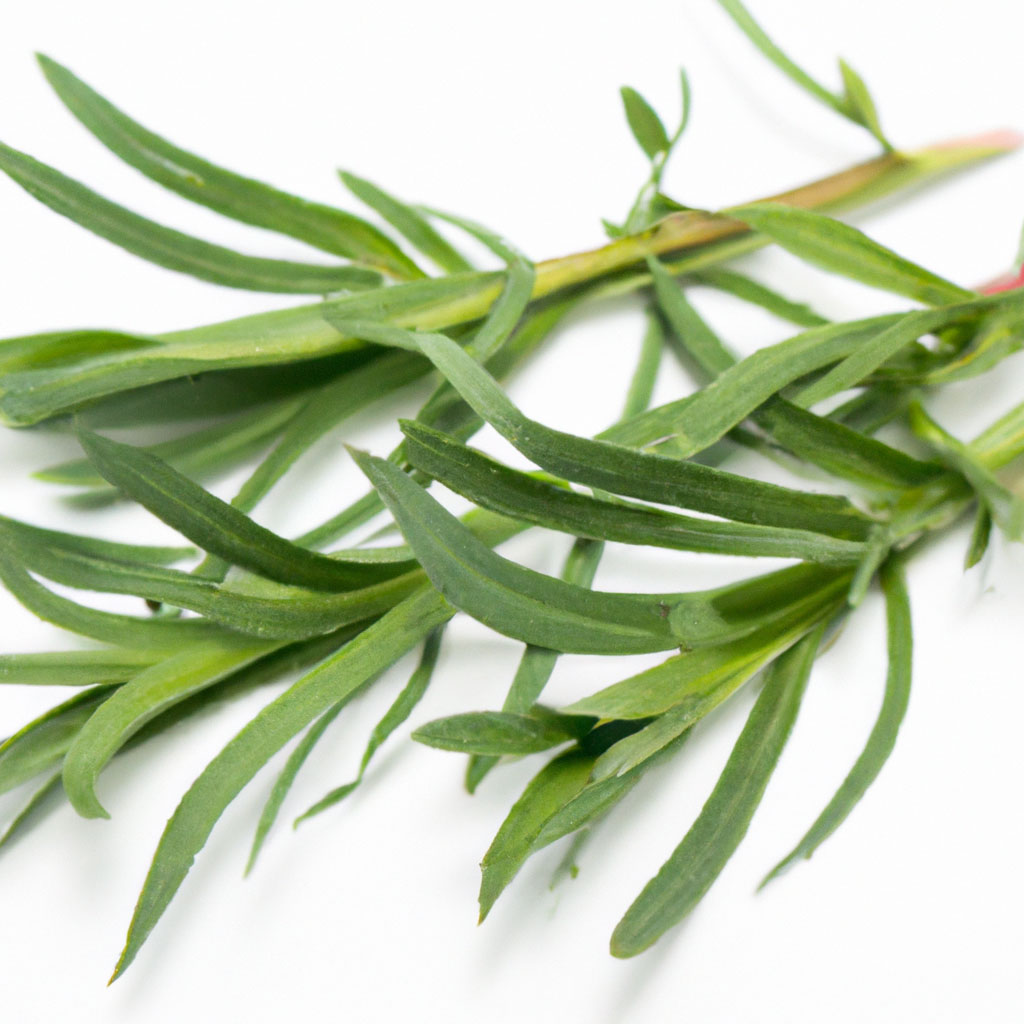Botanical Name: Artemisia dracunculus
Tarragon, a perennial herb known for its distinctive flavor and aroma, has long been a favorite ingredient in French cuisine. With its slender, lance-shaped leaves and subtle anise-like scent, tarragon is often referred to as the “King of Herbs” in French cooking due to its ability to elevate sauces, meats, and vegetables with a delicate but unmistakable fragrance.
There are two main types of tarragon: French tarragon and Russian tarragon. French tarragon is the preferred variety in culinary applications, prized for its intense flavor and tender leaves. Russian tarragon, by contrast, has a more subdued taste and coarser texture, making it less desirable in fine cooking. French tarragon’s flavor is a blend of mild sweetness and a hint of licorice, with peppery and herbaceous undertones. This unique flavor profile makes it a versatile ingredient, easily complementing other herbs like parsley, chives, and chervil in classic herb mixtures such as fines herbes.
One of the most popular uses of tarragon is in the creation of traditional French sauces. The herb is essential to Béarnaise sauce, a rich, buttery sauce flavored with tarragon, vinegar, and shallots, typically served with steak and other meats. Tarragon also enhances hollandaise, vinaigrettes, and cream-based sauces. Its natural affinity for eggs makes it a key ingredient in omelettes aux fines herbes, adding a burst of fresh flavor that balances the richness of the eggs.
Tarragon pairs beautifully with poultry, seafood, and vegetables, particularly when used in dishes like roasted chicken, fish, or potato salads. It brings a fresh, anise-like brightness to delicate white meats and seafood, adding complexity without overwhelming the dish. Tarragon is also often infused in vinegars, where it imparts a fragrant, tangy flavor to dressings, marinades, and pickles.
Tarragon’s culinary value extends beyond French cuisine. It is used in Mediterranean, Eastern European, and Middle Eastern cooking, though often in different forms, such as dried or infused in oils. For example, in Georgian cuisine, tarragon is commonly used to flavor a traditional carbonated drink called Tarkhuna.

